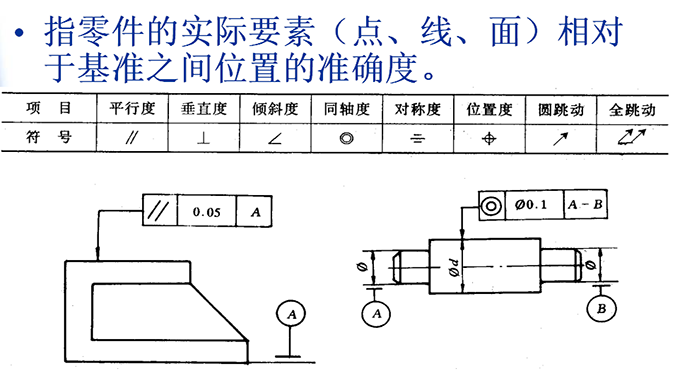Plastic Parts
CNC Machining Process-II
2.1. processing accuracy
The national standard stipulates that the commonly used precision grades are divided into 20 levels, which are represented by IT01, IT0, IT1, IT2...IT18, respectively. The higher the number, the lower the accuracy. Among them,
IT5-IT13 is commonly used.
High precision: IT5, IT6 are usually obtained by grinding.
Medium accuracy: The IT7-IT10 is usually obtained by finishing, milling and planing.
Low precision: IT11-IT13 usually consists of roughing, milling, planing, drilling
And other processing methods are obtained.
2.1.1 Size Accuracy
Shape error that may occur after Φ25 axis machining
The amount of error in the part size feature.
Q: What are the two levels of accuracy? Related?
A:Basic size and tolerance size
2.1.2 Shape accuracy
Refers to the extent to which the shape of the actual element on the part matches the ideal shape;
The national standard specifies six types of shape tolerances (see table below).
Labeling of shape accuracy: The grid is divided into 2 grids.
The arrow points to the surface to be expressed, the number indicates
The size of the allowable error, in millimeters.

2.1.3 Position accracy
Refers to the accuracy of the actual feature of the part (point, line, face) relative to the position between the references.

2.2 Surface roughness:
the microscopic surface of the part is unevendegree.
Causes:
1) Tool and workpiece phase during cutting friction on motion;
2) Vibration of machine tools, tools and workpieces during processing;
3) traces of chips that tear from the surface of the part during cutting;
4) Plastic deformation of the surface of the part during processing
The effect of surface roughness on part quality:
The surface roughness of the parts has a great influence on the performance and service life of the machine parts, mainly in the following aspects:
1) The surface of the part is rough, which will reduce the contact area and increase the pressure per unit area.
The deformation is increased, the friction resistance is increased, and the wear is accelerated;
2) Surface roughness affects the nature of the fit.
For clearance fit, the surface is rough and easy to wear,Causes the gap to increase rapidly;
for the interference fit, the assembly can make small peaks ,Squeezing flat, the effective interference is reduced, and the strength of the fitting is reduced;
3) The surface of the parts is rough, and it is easy to accumulate corrosive substances in the valleys, and it is difficult to remove them, and cuase surface corrsion
4) When the part is under load, the stress is concentrated at the valley, resulting in cracks.
Causes the part to break.

